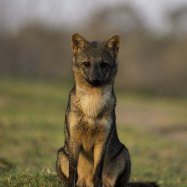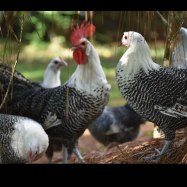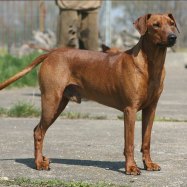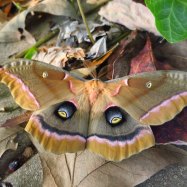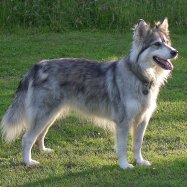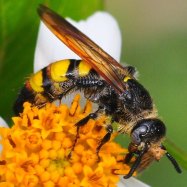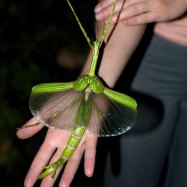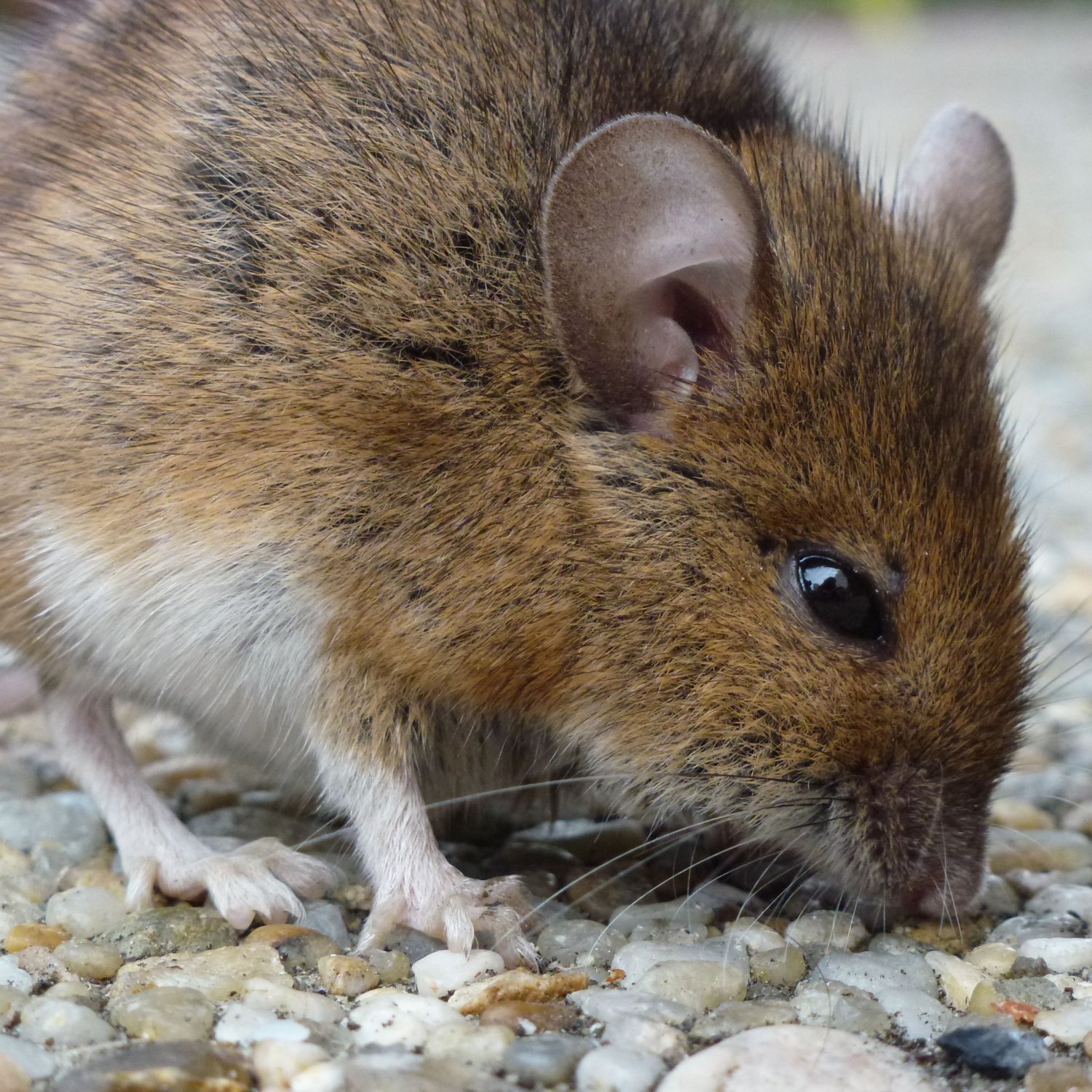
Mouse
7.5 to 10 cm (3 to 4 inches)
Did you know that mice, also known as Mus musculus, are one of the most widespread animals in the world? They measure between 7.5 to 10 cm long and belong to the Muridae family. With their small and slender body, they can be found all over the world, from forests to urban areas. These curious and agile creatures are an important part of our ecosystem. #WildlifeFacts #MouseFacts
Animal Details Summary:
Common Name: House Mouse
Kingdom: Animalia
Habitat: Various habitats including fields, forests, and human structures
The Mighty and Misunderstood Mouse: A Closer Look at Mus musculus
When we think of mice, we often picture tiny rodents scurrying around our homes, stealing bits of cheese and creating nuisances. But behind their small and seemingly insignificant appearance lies a fascinating and complex creature – the house mouse. Commonly known as Mus musculus, the house mouse belongs to the kingdom Animalia and the phylum Chordata, making it closely related to other mammals like rats, rabbits, and even humans. In this article, we will take a closer look at this underestimated animal and unveil some of its remarkable characteristics Mouse.The Origins of Mus musculus
The house mouse is a truly global creature, with a widespread distribution that covers almost every corner of the world. Its exact country of origin is unknown, as it is believed to have originated in Asia and then spread to other parts of the world through human activities such as trade and colonization. They can now be found on every continent except Antarctica, thriving in various habitats ranging from fields and forests to urban and rural human structures.The Physique of a House Mouse
At first glance, the house mouse may not seem like a remarkable animal – it is small, slender, and typically only measures around 7.5 to 10 cm in length, with a weight of 20 to 30 grams. But upon closer inspection, one can appreciate the unique body structure of this animal. Their bodies are designed to squeeze through small spaces and navigate through narrow crevices, making them excellent escape artists and adept at finding shelter. Their small size also allows them to move quickly and quietly, making them excellent hunters and scavengers.A Colorful World of Mice
The common misconception is that all mice are the same, with their distinct gray or brown coloration Mamushi Snake. However, the house mouse has a surprising range of colors and patterns. Depending on their geographical location, these tiny creatures can have a coat that ranges from solid gray to shades of brown and even black. This variation in color helps them blend in with their surroundings, making them less visible to predators. It also adds to their elusive nature, as they can be challenging to spot in their natural habitat.A House Mouse's Diet
One of the most remarkable characteristics of house mice is their feeding behavior. Unlike other rodents that are primarily herbivorous, the house mouse is an omnivore, meaning it feeds on both plants and animals. This diet versatility has been crucial in the survival and adaptability of this species. In the wild, they feed on a variety of seeds, grains, and small insects, while in human structures, they will scavenge for crumbs and even chew on electrical wires. This feeding method has allowed them to thrive in various environments and survive even in harsh conditions.The Social Life of Mice
House mice are highly social creatures, and they live in large groups known as colonies. These colonies are typically formed by a dominant male and several females, along with their offspring. This social structure is essential for their survival, as it allows them to protect each other and share resources. Within their colonies, mice have a complex communication system, using high-pitched sounds and even ultrasound to communicate with one another. This communication is essential for coordinating their activities, such as hunting and foraging.Adaptable and Intelligent Creatures
The adaptability of house mice is a testament to their incredible intelligence. Not only are they able to survive in a wide range of environments, but they are also remarkably intelligent and can learn quickly. In laboratory settings, they have demonstrated impressive abilities to navigate through mazes and solve puzzles, showing that their small size does not equate to a small brain. This intelligence has also been essential in their ability to evade predators and survive in human-altered environments.Impacts on Human Structures
With their ability to thrive in human structures, house mice have become a common pest in homes and buildings. They can cause extensive damage by gnawing on furniture, wires, and other household items. They also pose health risks to humans, as they can carry and transmit diseases. To prevent infestations, it is essential to keep a clean and clutter-free living space and seal any potential points of entry.The Importance of Mus musculus in the Ecosystem
Despite their notoriety as pests, house mice play a crucial role in the ecosystem. As prey, they form an essential part of the food chain, providing food for larger animals such as snakes, birds, and foxes. They also help with seed dispersal, aiding in the growth and diversity of plants. Furthermore, their burrowing activities help aerate the soil and encourage the growth of microbial communities, enhancing the health of the ecosystem.In conclusion, the house mouse is undoubtedly a mighty and misunderstood creature. Beyond their small size lies an animal with incredible intelligence, adaptability, and social behaviors. They may be seen as pests in our homes, but they hold a significant role in balancing the ecosystem. So, the next time you spot a mouse scurrying across your floor, take a moment to appreciate its remarkable and often underestimated nature.

Mouse
Animal Details Mouse - Scientific Name: Mus musculus
- Category: Animals M
- Scientific Name: Mus musculus
- Common Name: House Mouse
- Kingdom: Animalia
- Phylum: Chordata
- Class: Mammalia
- Order: Rodentia
- Family: Muridae
- Habitat: Various habitats including fields, forests, and human structures
- Feeding Method: Omnivorous
- Geographical Distribution: Worldwide
- Country of Origin: Unknown (thought to have originated in Asia)
- Location: Global
- Animal Coloration: Variable, including gray, brown, and black
- Body Shape: Small and slender
- Length: 7.5 to 10 cm (3 to 4 inches)
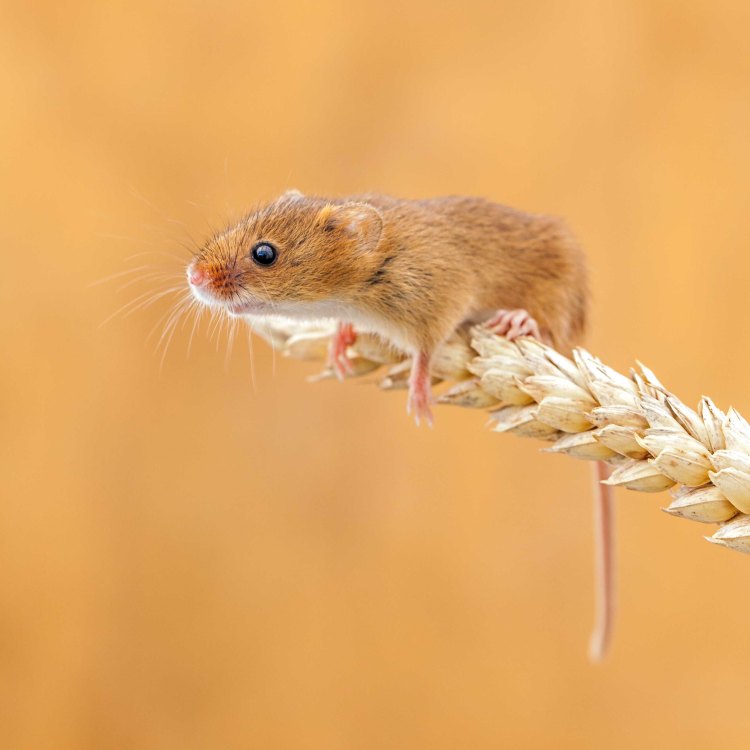
House Mouse
- Adult Size: 7.5 to 10 cm (3 to 4 inches)
- Average Lifespan: 1 to 3 years
- Reproduction: Sexual
- Reproductive Behavior: Promiscuous
- Sound or Call: Squeaking and high-pitched calls
- Migration Pattern: Non-migratory
- Social Groups: Social, live in colonies
- Behavior: Nocturnal, agile climbers, excellent swimmers
- Threats: Predation, competition with humans for resources
- Conservation Status: Least Concern
- Impact on Ecosystem: Can cause damage to crops and structures
- Human Use: Laboratory research, pets
- Distinctive Features: Small size, long tail, large ears, pointed snout
- Interesting Facts: House mice have been used as model organisms in scientific research for many years.
- Predator: Predatory birds, snakes, and larger mammals
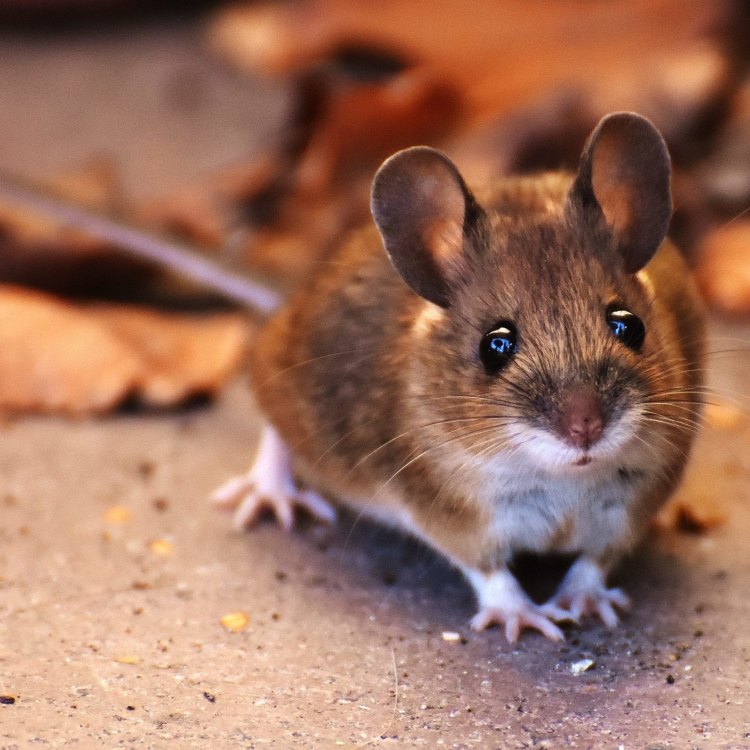
Mus musculus
The Mighty Mouse: An Insight into the Mysterious Small Rodent
The mouse, a tiny creature that is often overlooked and underestimated, is the subject of our curiosity in this article. Known for their small size and scurrying movements, mice are found all over the world, except for the Arctic and Antarctic regions. They belong to the family Muridae, which includes other small rodents like rats, voles, and lemmings.Let's dive into the fascinating world of mice and uncover the unique features that make them stand out from other rodents PeaceOfAnimals.Com.
A Closer Look at the Mouse: Physical Characteristics and Behavior
Mice are small creatures, measuring around 7.5 to 10 cm (3 to 4 inches) in length, and weighing only a few grams. They have a distinctive pointed snout, large ears, and a long tail, which can measure up to 10 cm in length. These features make them agile climbers, able to navigate through tight spaces and leap onto high surfaces.They are also excellent swimmers, using their tails as a rudder to steer in the water. This ability comes in handy when they are foraging for food or escaping from predators.
Mice are nocturnal, which means they are most active during the night. This behavior allows them to avoid predators and compete with other animals for resources. They have keen senses, particularly their sense of smell, which allows them to detect food and predators in their surroundings Milk Snake.
In terms of reproduction, mice have a fairly short lifespan, averaging between 1 to 3 years. They are promiscuous animals, meaning the males mate with multiple females and vice versa. This behavior helps ensure genetic diversity within the population.
Social Groups and Communication
Mice are social creatures, living in close-knit colonies or groups. They communicate with each other through vocalizations, including squeaking and high-pitched calls. These sounds serve as a form of communication between individuals, particularly during mating or territorial disputes.Individual mice also communicate through scent marking. They use their urine and feces as a way to mark their territory and communicate with other mice in the area. This form of communication is essential for maintaining social structure and avoiding conflicts within the colony.
A Home in the Wild
The house mouse, Mus musculus, is the most common species of mouse found in human habitats, including homes, farms, and cities. They are non-migratory animals, meaning they do not embark on long-distance journeys like other animals do. Instead, they build their homes in burrows or nests, often hidden from plain sight.In the wild, mice have a varied diet, feeding on seeds, grains, fruits, insects, and even small vertebrates. They are opportunistic feeders, meaning they will eat whatever is available, making them adaptable to different environments.
Threats and Conservation Status
Mice face various threats in their natural habitat, including predation by birds, snakes, and larger mammals. They are also at risk of competition with humans for resources, as they often reside in human-made structures like homes and farms. In some cases, they can cause damage to crops and structures, making them a nuisance to humans.Despite these threats, mice are still widespread and are considered of least concern in terms of conservation status by the IUCN (International Union for Conservation of Nature).
Unique Features and Human Use
Mice may be small and seemingly unimportant, but they hold a significant place in scientific research and human use. House mice, in particular, have been used as model organisms in various scientific studies for many years. They share many genetic similarities with humans, making them ideal for studying human diseases and developing treatments.In addition to their use in the laboratory, mice are also popular as pets. With proper care, they can make friendly and sociable companions. Many mice owners enjoy watching their pets scurry around and interact with their environment, making them entertaining pets to have.
The Impact of Mice on Ecosystems
Like every animal, mice play a critical role in their ecosystem. They are primary consumers, feeding on various plants and invertebrates, and are also food for many predators. This interdependence helps maintain the balance in the ecosystem, ensuring the survival of various species.However, in some cases, mice can cause damage to crops and structures, leading to conflict with humans. In agricultural areas, they can significantly reduce crop yields, resulting in a loss of resources for farmers. In urban areas, they can cause damage to buildings and contaminate food, posing a health risk to humans.
In Conclusion
In this article, we have explored the many unique features of the humble mouse. From their small size and long tail to their excellent sense of smell and ability to swim, mice are fascinating creatures that deserve our attention and appreciation.Despite facing threats and being seen as pests by some, mice play an essential role in maintaining the balance in their ecosystems. They are also valuable to humans, both as subjects of scientific research and as beloved pets.
So next time you encounter a mouse, remember that there is more to them than meets the eye. These small rodents have a significant presence in our world, and we should strive to coexist with them in harmony.
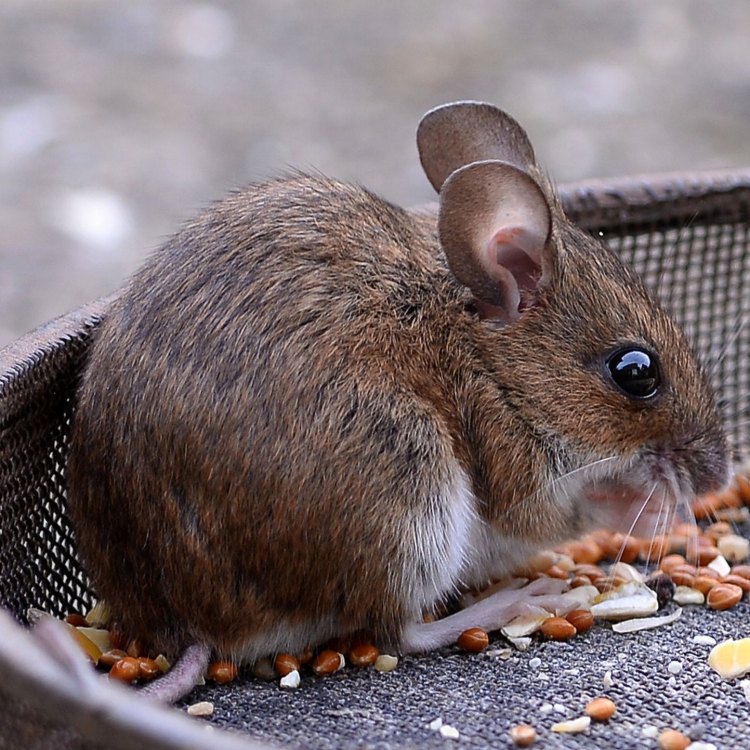
The Mighty and Misunderstood Mouse: A Closer Look at Mus musculus
Disclaimer: The content provided is for informational purposes only. We cannot guarantee the accuracy of the information on this page 100%. All information provided here may change without prior notice.


